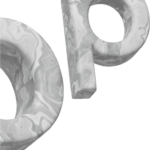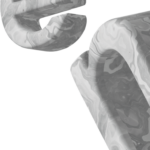

Set up your shop
Manage my administrative procedures

How Using a Purchase Order Can Help Your Retail Store
20 March 2023
Are you a small retail business owner? If so, do you know how using a purchase order (PO) can help you to streamline your business practices?
Running your own small retail business means learning how to manage paperwork. From keeping track of receipts and invoices to maintaining inventories, retailers need to stay on top of their paperwork skills. One of the most important documents a small business owner must learn how to produce is a purchase order.
A purchase order is issued whenever a buyer requires goods or services from a seller. Since retailers must regularly deal with a variety of suppliers, a purchase order is an incredibly common document for them to issue. Purchase orders help business owners make sure they have enough stock and can help them to manage their finances.
If you are in the process of opening a retail store, you are going to need to have a good grasp of what a purchase order is. Whether you intend to operate online or have a physical location, purchase orders are sure to be a regular part of your daily operations. Keep reading to find out exactly what a purchase order is, how they work in practice, and what you need to include in a purchase order.
What is a purchase order?
A good way to think of a purchase order is that it is like an invoice, but in reverse. Instead of requesting payment, a purchase order makes a request for goods or services. When a retailer requires stock or goods, they will send a purchase order to a particular supplier. The PO will list all the items required by the buyer, the quantities needed, and the prices of each item.
Purchase orders act as binding agreements. A buyer is in effect sending a contract to the seller that states: ‘You will supply me with these goods at this price by this date, and I will make payment for these goods on this date’.
Purchase orders also provide a level of legal protection for both parties and deter fraudulent behaviour. Once a seller has accepted the purchase order, they cannot refuse to supply the goods—except in extraordinary circumstances. Likewise, the seller cannot refuse to make payment once goods have been received. Unlike invoices, which are mandatory for some businesses, issuing a purchase order is not a legal requirement in the UK. However, once a purchase order has been accepted, it then becomes a legally binding contract.
The benefits of purchase orders
Purchase orders are a useful purchase requisition tool for both the retailer and their suppliers. They streamline the procurement process for all parties involved.
A purchase order can let a supplier know how many products their customers require. This can ensure they never fall behind or produce more items than necessary.
A purchase order helps buyers to be sure they are going to receive a certain amount of goods on a certain date. This can provide a guarantee for the retailer that they will have enough stock to cover demand.
For both buyers and sellers, purchase orders are incredibly useful when it comes to audits, bookkeeping and accounting. Purchase orders provide a good estimate of what a buyer’s financial outlay for a month may be. They can give sellers a good idea how much money they may take in for the month. In both cases, purchase orders greatly assist in keeping track of inventories and materials.
Purchase orders should contain information that corresponds exactly to invoices. This simplifies the process of keeping tax records for both parties. By writing and accepting purchase orders, buyers and sellers are acting to protect their own interests.
Purchase orders are a legal agreement that the requested goods will be delivered on time, will be of sufficient quality, and will be paid for promptly. If a dispute arises regarding payment, delivery times, or the quality of goods, then the purchase order can be used in court.
In summary, purchase orders:
- Assist with record-keeping
- Assist with keeping track of cash flow
- Assist with maintaining inventory levels
- Streamline the procurement process
- Provide legal protection for buyers and sellers
How does a purchase order work in practice?
Raising purchase orders is a common duty for retailers, whether they operate as an e-commerce business or have bricks-and-mortar premises. A purchase order is raised and sent to a supplier whenever a retailer requires supplies to make their products, or the products themselves.
While the particular operating procedures of different businesses may vary, there is a general sequence of steps involved in a PO system. As a rough guide, the steps involved in issuing a purchase order are as follows:
- Step One: A retailer decides that they require a product or products for their business needs. They then choose which company will supply the product or products to them.
- Step Two: Either the retailer themselves or their purchasing department will draft a purchase order. The purchase order will contain all the relevant details including the number of products required, the cost of each item, and the total cost. It will also contain the contact details and address of the buyer, and the desired delivery date.
- Step Three: Once the purchase order has been checked to ensure it contains no errors, it is then sent to the supplier. Purchase orders can be sent via post, electronically as PDFs in an email, in person, or by fax.
- Step Four: The supplier receives the purchase order and checks that they can fulfil the order. They must be sure that they can supply the number of goods requested, that the products will be in satisfactory condition and that the order is delivered on time. At this point, the supplier can refuse the purchase order if they do not believe they can fulfil it. If the supplier accepts the purchase order, they will then need to confirm with the retailer that it has been accepted and the order will proceed.
- Step Five: The supplier prepares the products requested and has them shipped to the retailer on or by the requested delivery date.
- Step Six: The supplier will then issue an invoice for the order. This can be sent with the order itself, or later on. The purchase order number should be listed on the invoice issued.
- Step Seven: Once the buyer has received the shipment and the invoice, they must make payment in line with the previously agreed payment terms. If there is an issue with the products, the retailer may at this point refuse to pay the invoice and the matter may be legally contested. The purchase order can be used as evidence in court if needed. If the retailer has no issues, they will make payment and the purchase order can be closed.
What are the different types of purchase orders?
It is important to realise that there is more than one type of purchase order. In fact, there are four types of purchase orders that a retailer will use to request products from a supplier:
- Single-use purchase orders: Single-use purchase orders can also be called standard purchase orders. They are used to request one order only. The request remains in effect until the goods have been received. Once the products have been delivered and payment is made, the purchase order is closed.
- Planned purchase orders: Planned purchase orders are issued in advance based on the retailer’s expected needs. Quite often, the delivery date is either not included or subject to change. The number of items requested can also be subject to change. These types of purchase orders are used for long-term agreements.
- Blanket purchase orders: Typically, blanket purchase orders will be used to request a large number of items from a supplier. A retailer may be able to secure a discount from a supplier by requesting multiple products in one order.
- Contract purchase orders: This is the most formal type of purchase order and involves a supplier and a retailer organising and agreeing to terms at the same time. It can be very useful for buyers and sellers who wish to enter into long-term agreements.
How to create a purchase order
As with an invoice, there is no set purchase order format. Generally speaking, however, there is certain information that should be included in your purchase order:
- A unique purchase order number.
- The buyer’s details, including their business name and contact details.
- The desired delivery address and requested delivery date.
- The supplier’s contact details, often including the name and position of the contact person in charge of fulfilling the order.
- The payment terms, shipping requirements, and any other relevant terms.
- The number of items requested, the unit price, and the total price for the order. This section may also include details such as catalogue numbers.
- A detailed description of the products ordered may also be included.
Some retail business owners create their own purchase order template as a Word document or make a purchase order template using Excel. Others prefer to use automated purchase order software.
How to cancel a purchase order
Sometimes circumstances may force a retailer to cancel a purchase order. For example, they may have had a large order cancelled by one of their own customers, or personal circumstances may have forced them to shut their business down for a period.
If a buyer does need to cancel a purchase order, they should do so as soon as possible by contacting the supplier. The request should be in writing and use formal language. Technically speaking, a buyer can cancel a purchase order any time before it has been formally approved by the seller. Once the seller has indicated that they have accepted the purchase order and are working to fulfil it, it becomes legally binding.
These types of situations can be complicated and much depends on the relationship between the buyer and seller. If a retailer has a good relationship with a supplier, the supplier may cancel an order after it has been accepted. This is at the supplier’s discretion. Once a purchase order is accepted, it becomes a legal contract.
Online entrepreneurs and new retailers often find themselves in difficult situations. At Ankorstore, we are passionate about supporting new businesses and helping them get the best start possible. We created the Ankorstart programme to provide new retailers with expert guidance and assistance. If you have just started a retail business, then Ankorstart can be a valuable resource.
FAQs
Who issues a purchase order?
Purchase orders are issued by buyers who want to procure goods or services from sellers. They contain a list of items required, the price per item, the total price, and the desired delivery date and payment terms.
Is a purchase order legally binding?
Once a purchase order is accepted by the seller it does become a legally enforceable contract. A seller can use a purchase order to pursue payment via the courts. A buyer can also use a purchase order to raise a dispute based on the quality of goods or the delivery date.
Can I cancel a purchase order?
It is possible to cancel a purchase order. You should do so in writing and ask for the cancellation before the purchase order is accepted by the seller. Once accepted, the purchase order becomes a legally binding document. In some cases, a seller may decide to cancel an order once it has been accepted to ensure a long-term relationship with the buyer.
Related posts "Manage my administrative procedures"

Do you want to know how self-employment tax works? Do you have questions about your tax limit, types of taxes, self-assessment forms, and tax return filing? The following article is a quick guide to help you deeply understand self-employment tax rates and address other tax concerns

Ankorstart experts explain safety guidelines for a retail store, identifying potential risks and providing insight on how to avoid injuries through the implementation of security policies.

Learn thanks to the Ankorstart experts how to protect your brand and what a trademark is

The POS is part of the customer experience. Here are a few pieces of advice to ensure you will choose the right tool while starting your business.


